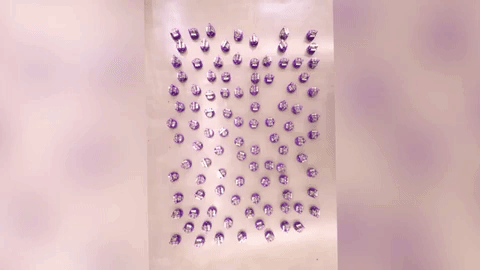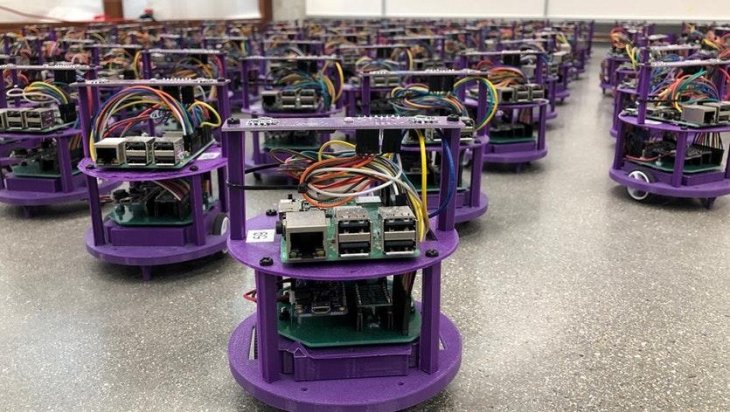This New Algorithm Can Prevent Self-Driving Vehicles From Crashing
Dhir Acharya - Feb 27, 2020

Sometimes, a fleet of robots is better than using one large robot. But the challenge is to avoid collisions, and that's now possible with a new algorithm.
- Cafe In Tokyo With Robot Waiters Controlled By Disabled Staff
- Best Robot Vacuums In India To Clean Carpets, Wood Floor And Pet Hair
- AI Is Being Trained To Identify Faces In The Dark Using Thermal Images
US researchers have developed the first decentralized algorithm that will be able to stop robots from bumping into each other when they work together in the same space.
If the algorithm does work as the researchers say, it will potentially help prevent self-driving vehicles on the road or robots working in large warehouses from crashing. For now, researchers at Northwestern University have successfully simulated 1024 robots and tested 100 real robots in the lab.

They were all efficiently, safely, and reliably converged to create a pre-determined shape in under a minute, according to the research report.
In many circumstances, a fleet of small robots work better than one large robot because in case one of them fails, the others can still complete the task. The challenge is to avoid gridlock and collisions.
Michael Rubenstein, a researcher of the team, shares that to achieve this goal, the new algorithm sees the ground underneath the robots as a grid. Using a technology similar to GPS, the robots all know their positions on the grid.

Before deciding where to move, a robot communicates with its neighbors using its sensors, then it determines if a nearby space in the grid is occupied or vacant. It’s stated by the researcher that the robots don’t move to a new spot unless it’s free and if they know the other robots are not moving to that same spot. The robots are careful and they reserve a spot ahead of time.
Despite careful coordination, the robots can still communicate with each other as well as move swiftly to form a pre-determined shape. This is accomplished by keeping them near-sighted. Specifically, each robot can sense three or four closest neighbors only, they cannot see across the entire swarm, making it easier to scale up the system. The interaction to make the decision between the robots happens locally without global information. For instance, in this research, 100 robots can work together and take less than a minute to form a shape while that might take an hour with previous approaches.
>>> After A 15-Feet Drop, Tata Nexon Manages To Save All Passengers
Featured Stories

Features - Jul 01, 2025
What Are The Fastest Passenger Vehicles Ever Created?

Features - Jun 25, 2025
Japan Hydrogen Breakthrough: Scientists Crack the Clean Energy Code with...

ICT News - Jun 25, 2025
AI Intimidation Tactics: CEOs Turn Flawed Technology Into Employee Fear Machine

Review - Jun 25, 2025
Windows 11 Problems: Is Microsoft's "Best" OS Actually Getting Worse?

Features - Jun 22, 2025
Telegram Founder Pavel Durov Plans to Split $14 Billion Fortune Among 106 Children

ICT News - Jun 22, 2025
Neuralink Telepathy Chip Enables Quadriplegic Rob Greiner to Control Games with...

Features - Jun 21, 2025
This Over $100 Bottle Has Nothing But Fresh Air Inside

Features - Jun 18, 2025
Best Mobile VPN Apps for Gaming 2025: Complete Guide

Features - Jun 18, 2025
A Math Formula Tells Us How Long Everything Will Live

Features - Jun 16, 2025
Comments
Sort by Newest | Popular